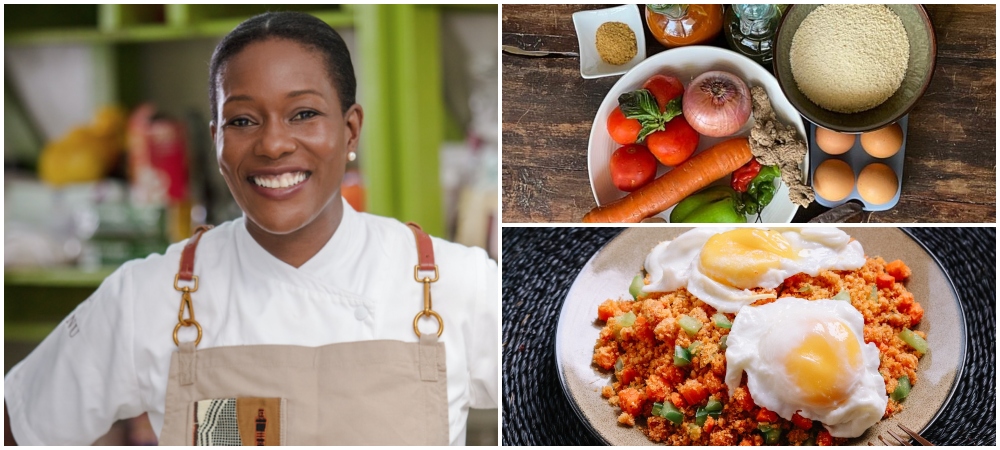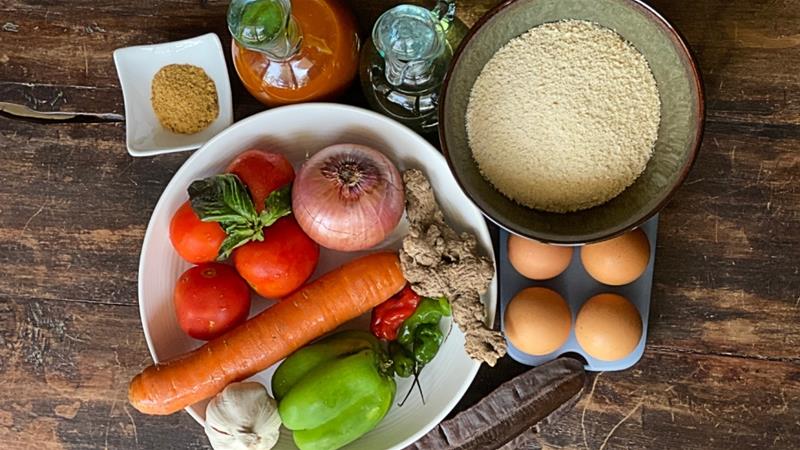Published
5 years agoon
By
GhMediaHub
As I watched the global spread of COVID-19, it became clear that Africa would not be an exception. Days after the first cases were reported in Ghana, the discussion among friends and family inevitably centred around the need to stock up on supplies.
When it came to food items, our shopping lists looked similar and all too familiar: tinned sardines, canned corned beef, “gari” (grated, fermented and dried cassava), “shito” (a preserved chilli sauce) – ingredients that formed the core of any self-respecting “chop box” – the trunk filled with long-life food that many Ghanaian pre-teens and teenagers took with them to boarding schools around the world to supplement the school’s meals.
Childhood stories were shared along with the shopping lists. To be part of an inner circle of popular pupils, the sardines had to be “Titus”, the corned beef, “Exeter”, my friends and family recalled.
Although I was born in Ghana, I never attended boarding school as my family moved to the United States while I was still in primary school. But these ingredients have always found a place in my pantry from childhood to the present day.
During my family’s lean years as new immigrants in New York in the early 1980s, some of my food memories were of us eating dinners of “eba” (a dough of gari and hot water) with canned sardines or corned beef and “meko” (a fresh pepper sauce made with tomatoes, onion and chilli pepper).
Years later, we ate more fresh and less canned foods. But gari remained in our kitchen.
I have memories of us coming back from church on Sundays and my mum throwing together a quick meal. She would make a tomato sauce, scramble some eggs into it and then mix it with gari. “Garifoto” became her Sunday brunch special.
Nearly 40 years later, when I go visit my parents in New York, they still have a stash of canned sardines, corned beef and gari. I would like to believe they are ingredients for nostalgic meals rather than emergency supplies.
After I left home, gari, shito, canned sardines and corned beef became part of my homesick essentials and have been handy over the years.
Prior to becoming a chef, I worked with the United Nations on humanitarian issues and, from time to time, we would not have access to markets and fresh food for myriad reasons. I travelled from Kosovo to Liberia, South Sudan, Kenya, Senegal and now back to Ghana with my gari and shito.
Now in Ghana, after starting my food enterprise, Midunu, I have made sure to keep these ingredients on my menu. So, of course, we have a dish which utilises gari, a house-made shito and fresh, locally caught sardines, served in a sardine tin.
I love finding ways to honour ingredients and dishes from my childhood which resonate with my guests. Despite the difference in our upbringing, the ingredients and food of Ghana unites us.
Now, in the days of social distancing and quarantine, with my kitchen closed and being in lockdown at home, I find myself with these same ingredients in my pantry. In these times of uncertainty and in hopes of finding comfort, I find myself turning to mum’s go-to garifoto.
I share this recipe with you in the hopes that it brings you a similar comfort. Feel free to replace the vegetables with any others you have in your fridge or freezer. If you do not have fresh tomatoes, you can use canned ones.


1½ cups gari (dried grated cassava) – can be substituted with cooked couscous or fonio
¼ tsp salt, plus more for blanching
60g carrots, medium dice
60g green beans, medium dice
60g green pepper, medium dice
6 Tbsp vegetable oil
4 Tbsp, Palm oil (or substitute with olive oil)
125g onion, medium dice
1tsp garlic, minced
2tsp fresh ginger, grated
340g tomatoes, seeded and diced
1tsp dried mushroom, fish or shrimp powder (optional)
½tsp prekese (Tetrapleura tetraptera, allspice, or your favourite spice blend)
2tsp (or to taste) minced chilli
8 basil leaves, cut into ribbons
4 eggs, cooked as desired.
1. Add 1/2 cup water to the 1/4tsp salt and let dissolve. Place the gari in a mixing bowl and slowly add the salted water to the gari until it is damp but not soaking wet. Add more water if necessary.
Note: If you do not have access to gari, you can substitute it with cooked couscous or fonio. In this case, there is no need to moisten it with water, you can skip step 1.
2. Blanch the carrots, green peppers and green beans in salted water, then drain and set aside.
3. In a large skillet on medium heat, add the palm oil and vegetable oil and wait until hot, saute the onions for a few minutes until softened, then add the garlic, ginger, tomatoes, mushroom/fish/shrimp powder (if using), chilli, salt and prekese and cook until the stew is developed and the flavours have melded together. Taste and adjust seasoning as desired.
4. Add in blanched vegetables and allow to cook for about five minutes. Turn heat to low and mix in the moistened gari until the gari is damp but not soaked. The gari will continue to absorb the sauce after mixing so be cautious not to make it too dry. Turn off the heat. Adjust the salt if needed.
5. Place one cup of garifoto in a serving dish garnish with fresh basil, top with eggs.
Recipe courtesy of Selassie Atadika
source: Aljazeera News
